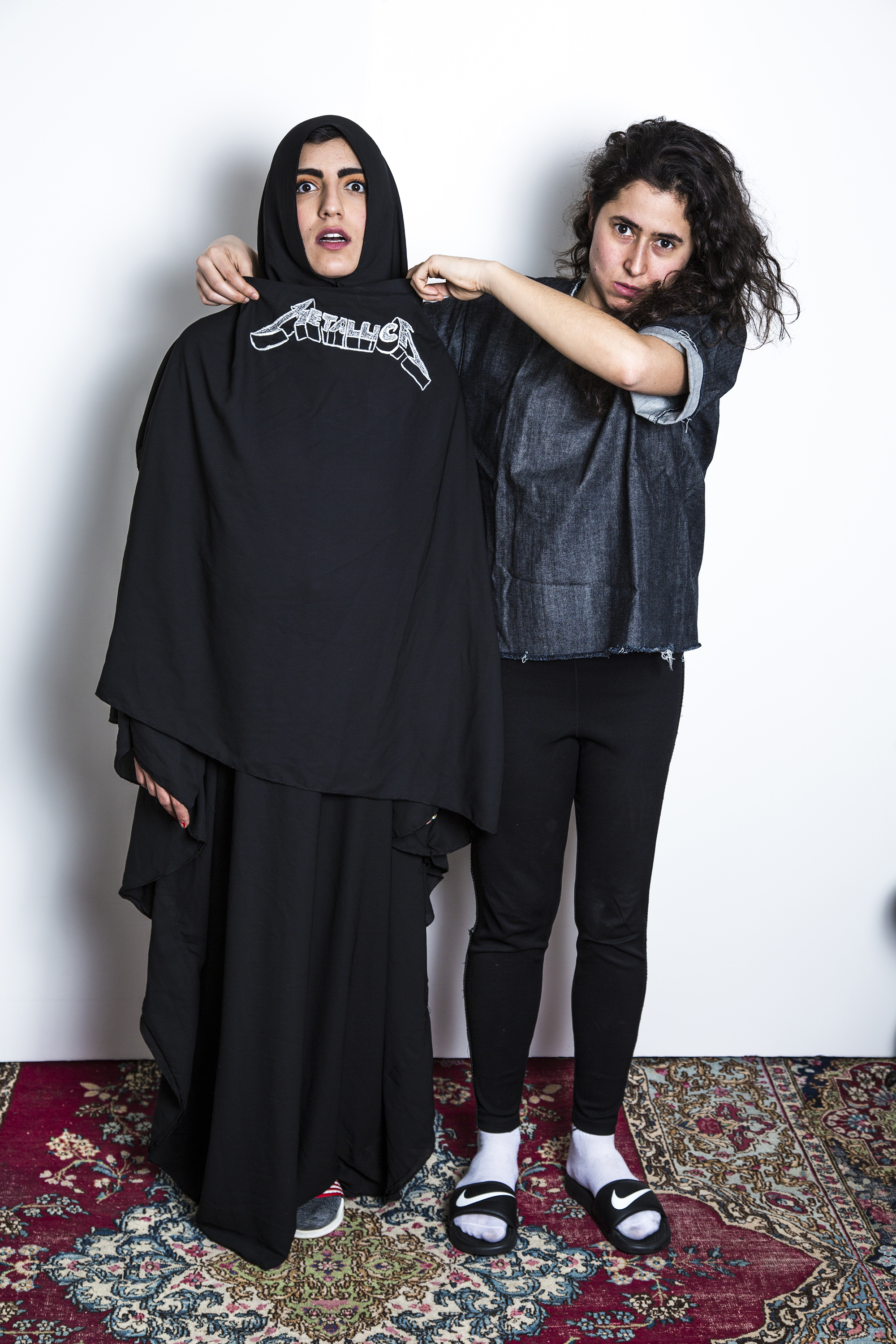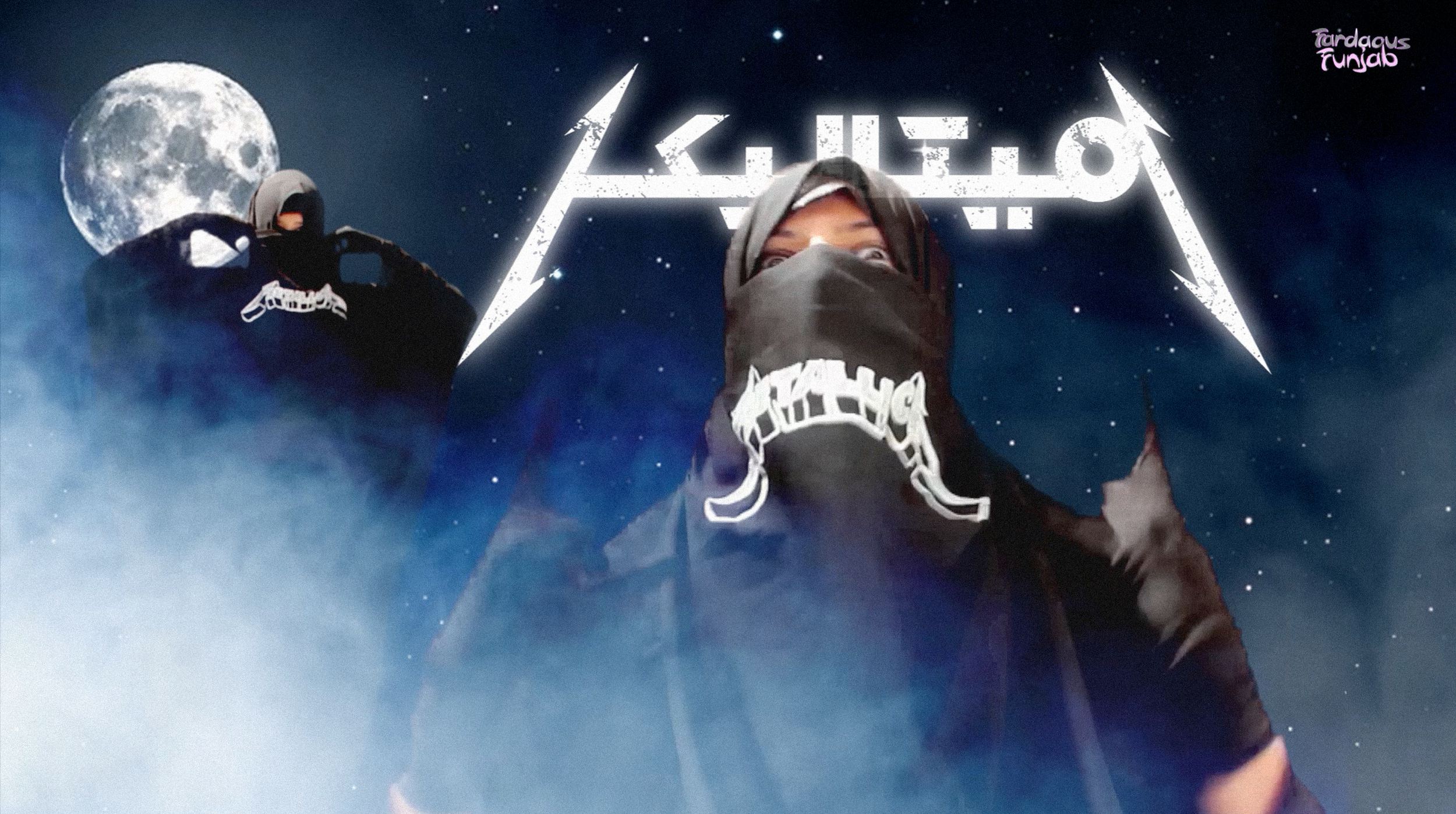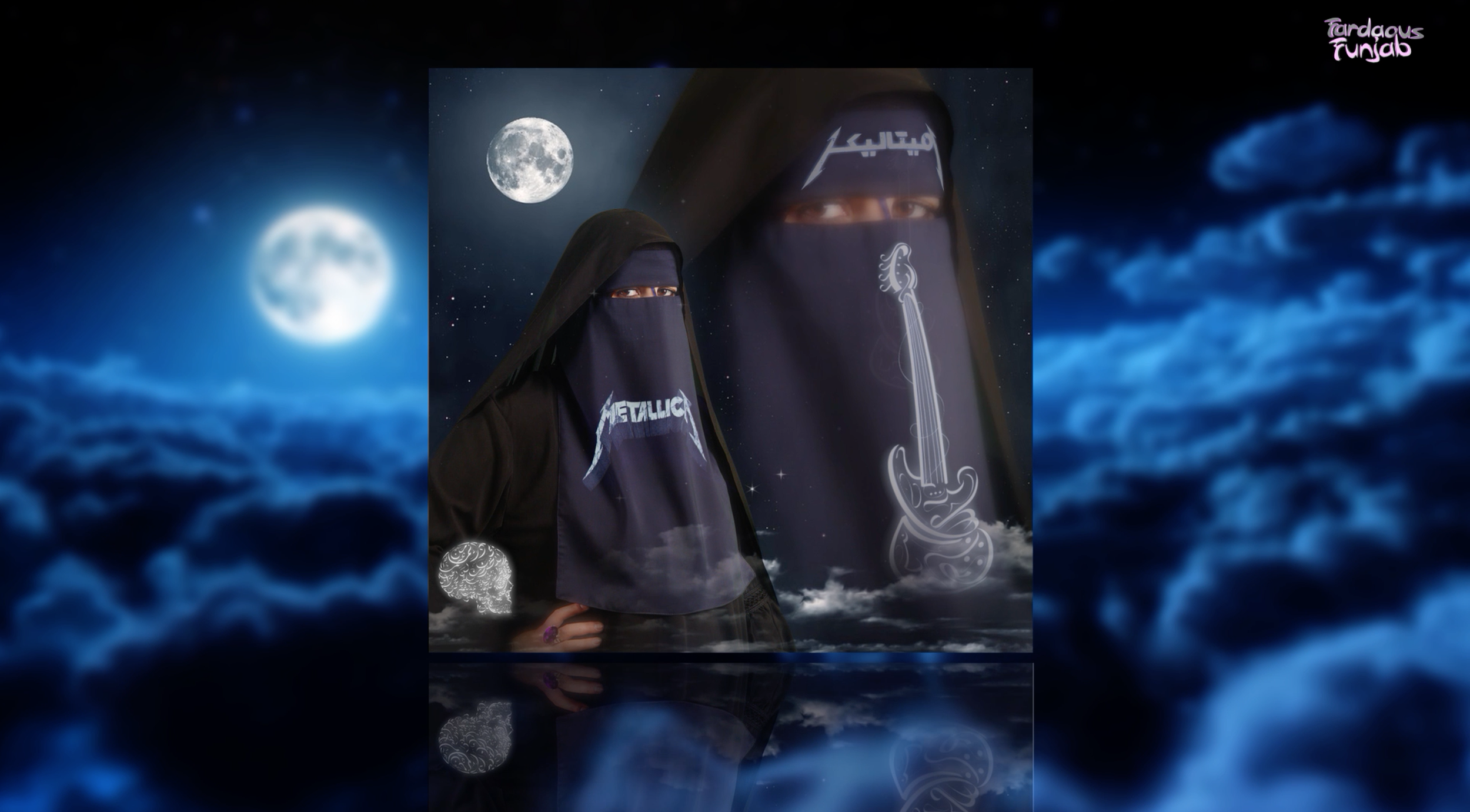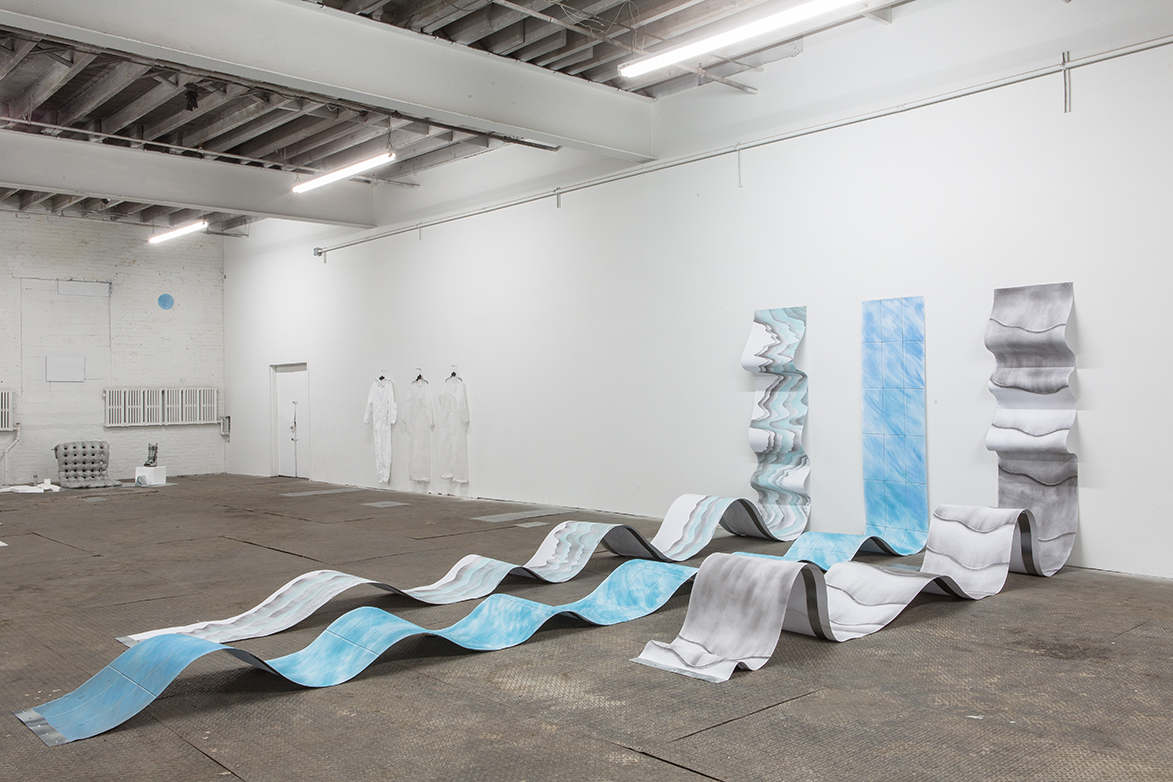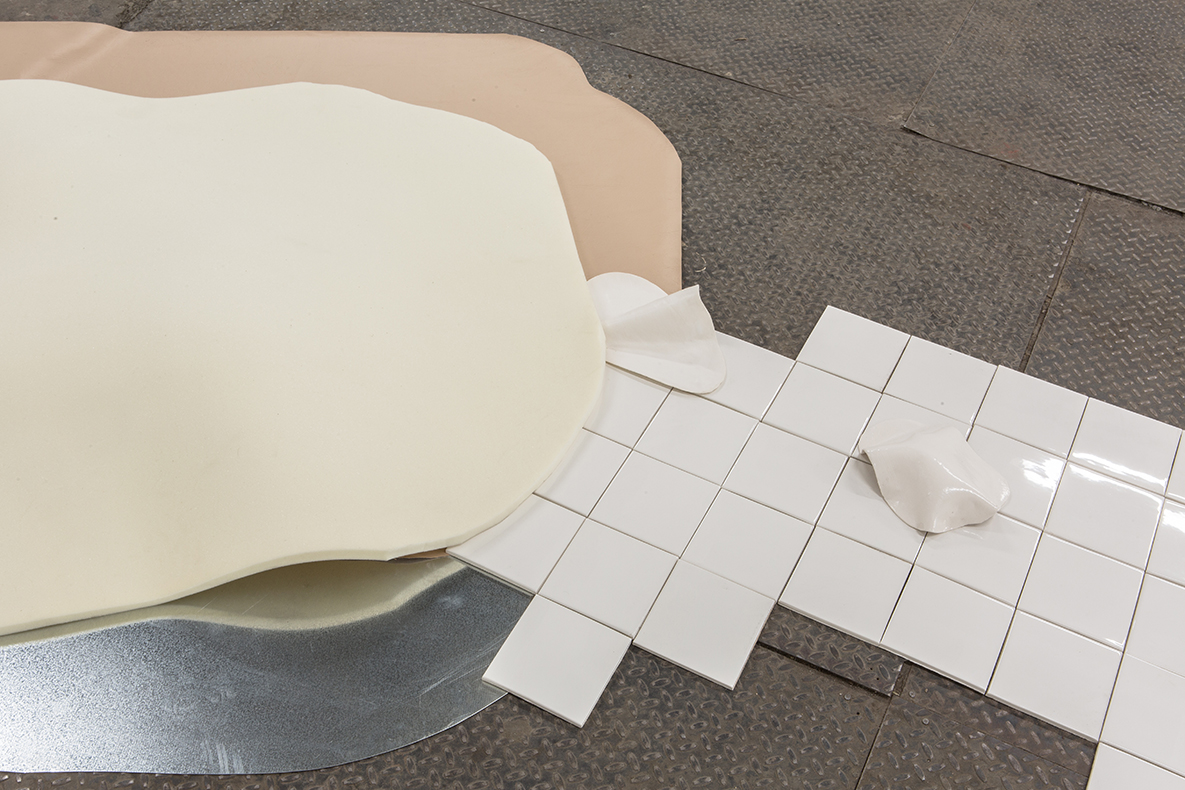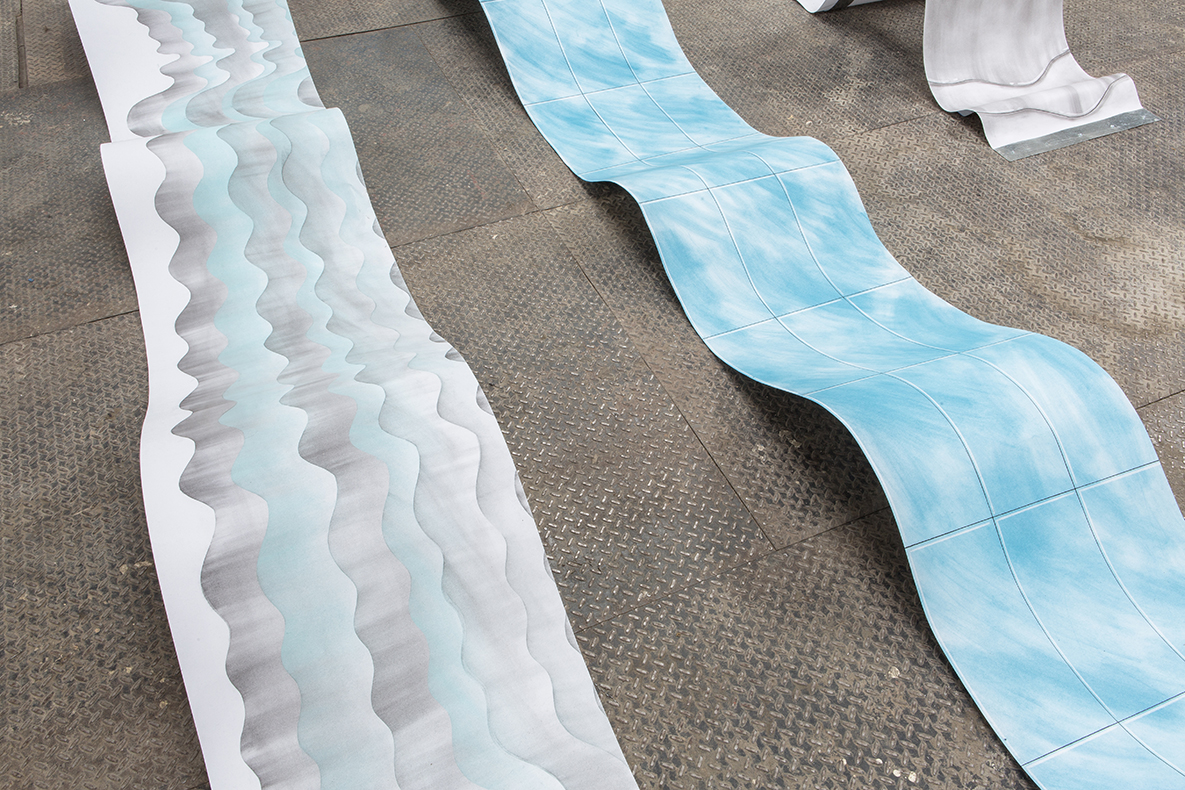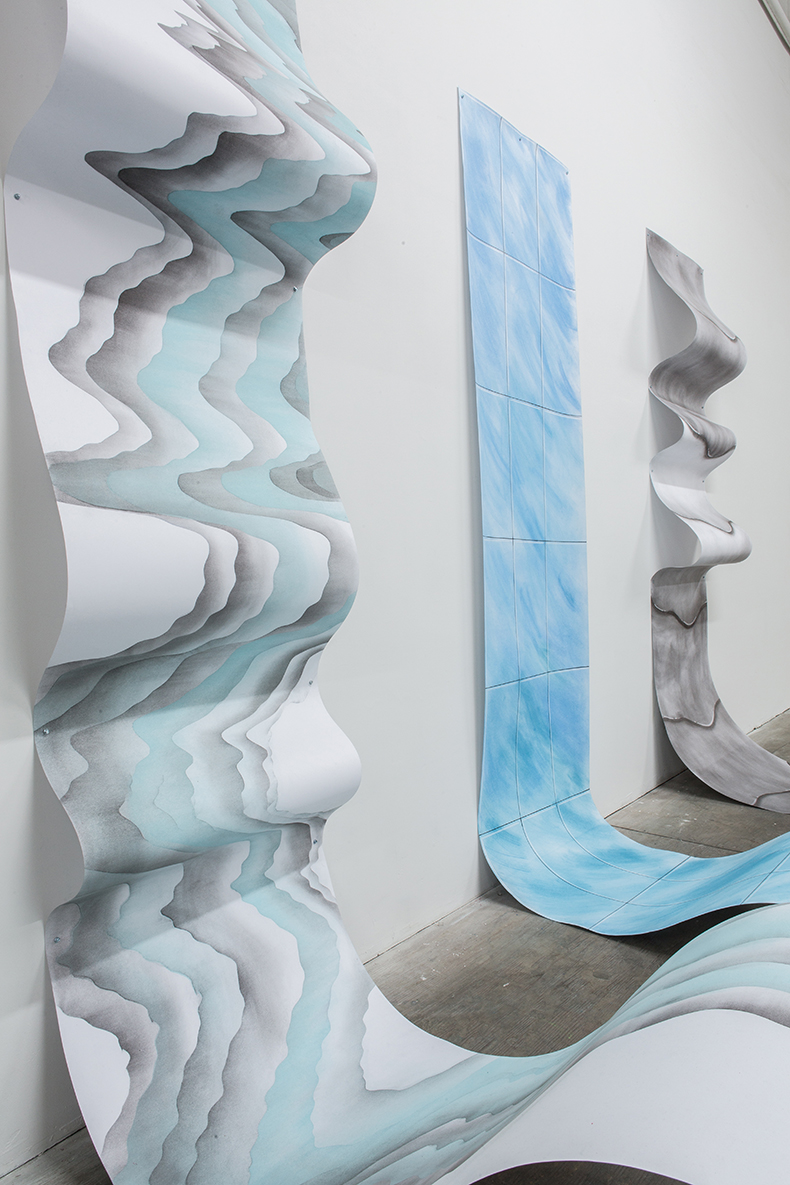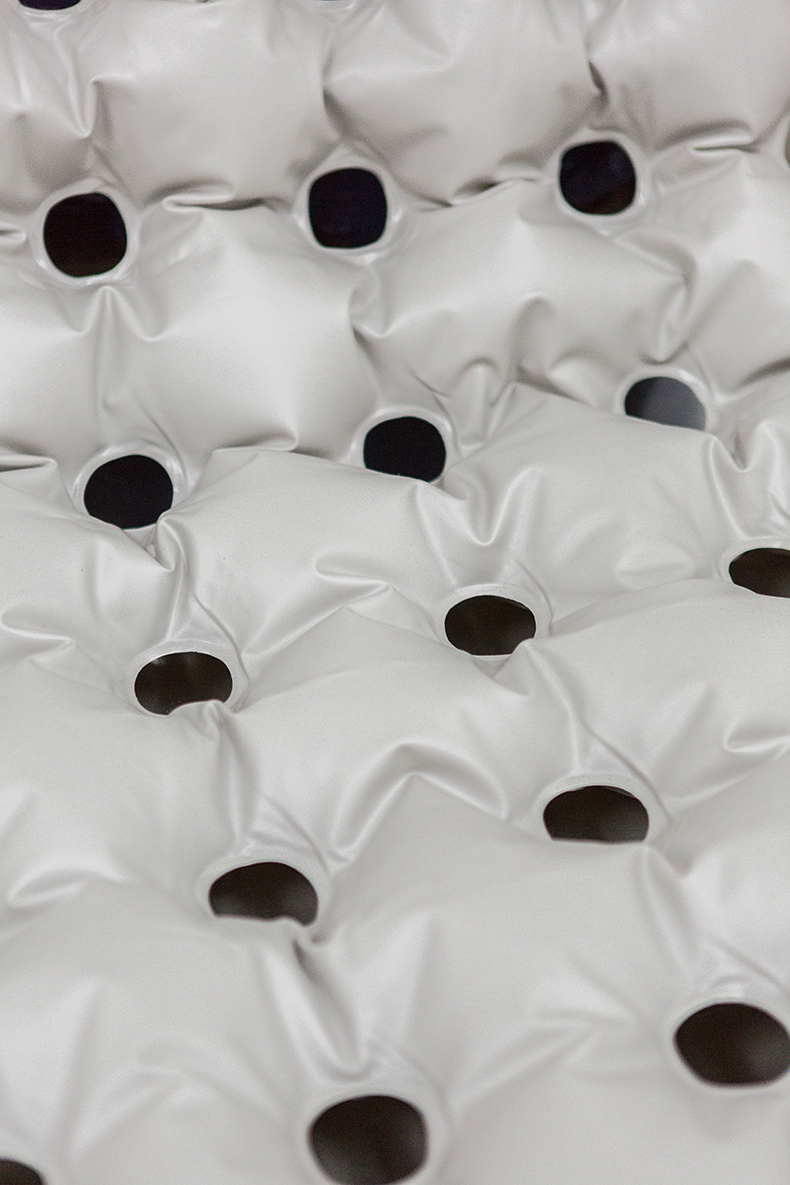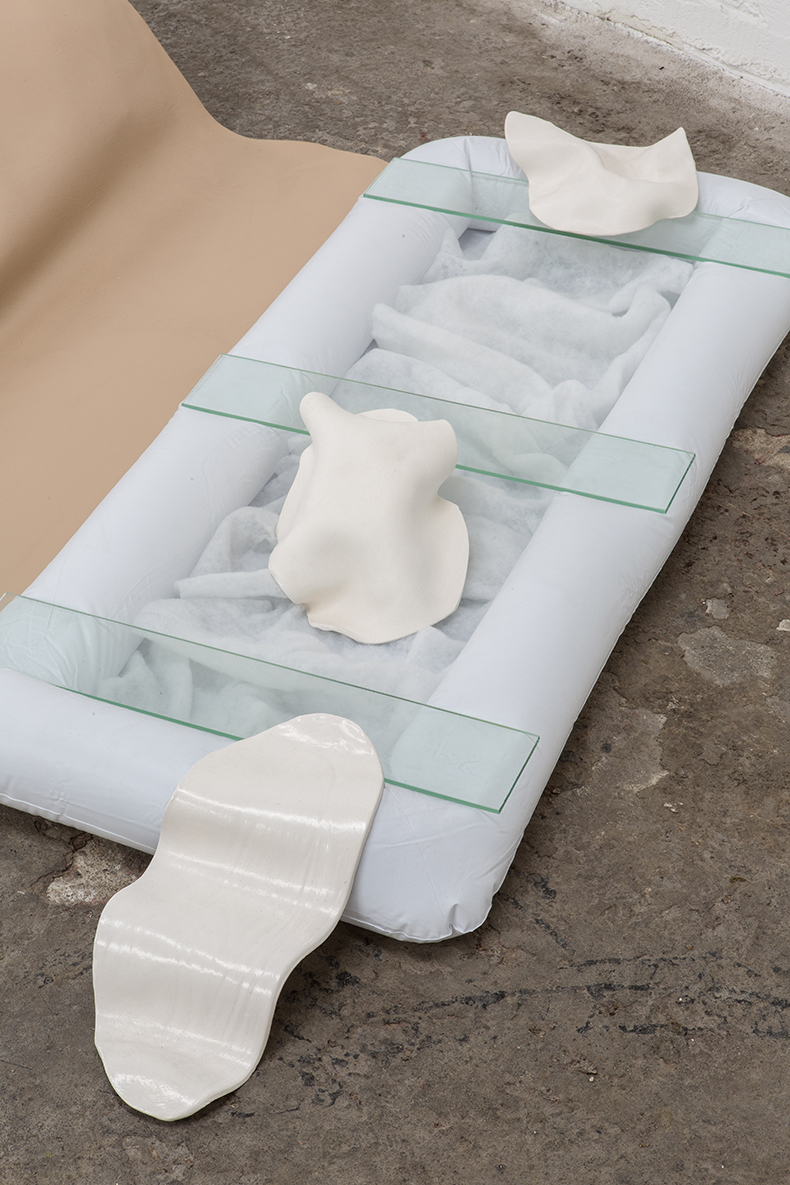N|A: Humor seems to be a big deal in your work and I wanted to start there, how humor works. Because it seems there’s more complex and more trans-humanist weirdo things that are going on in elsewhere but they all circulate around these really playful ideas. What is that intersection?
Meriem Bennani: It's something that comes back in art that I like, I’m drawn to things that make me laugh. When I started making art I never thought that humor was something that would qualify my work. But little by little it became something that obviously I was interested in. I really don't like art that is elitist, although I think it can be conceptual and still be valid but, I have a real problem when it can't be understandable to everyone, I think that's arrogant. Humor is a great way of communicating with everybody. It's such a gateway to a piece. for me humor functions almost like aesthetics. I think the aesthetic aspect of a piece can draw you in or out. It's also a way of coping and a passport for dealing with uncomfortable ideas.
These are obvious things but when you put humor in things, you kind of put them in a parallel reality. So, it's the idea of cartoons, it's the different version of everything, where everything is synchronized. So you'll be talking about death but in cartoons, death doesn't really exist, it's just the idea of it. Because it's the idea of it, you just have the idea on it's own without the physical drama behind it. And then you're able to talk about it, talk about it with emotion, but without the drama. Just looking at the fact itself. But also, more simply, if I see people laugh, it just makes me so happy. It's a great way to engage with people. I also think in general, not from my work but people in general, if they make me laugh, for me they have a very specific point of view in life that their humor is a very specific representation of. It’s a sign of intelligence, so I think if you can make things funny, you can communicate the way you structure your thoughts. And it’s like you make it accessible for other people.
N|A: Those are great points, but it’s often downplayed, comedians are very rarely thought of as being intellectuals for instance. Even though they oftentimes poke at things that are in fact complex and we really don’t know how to talk about, particularly about race and gender politics. As you say, difficult concepts are often made much more accessible in a more comprehensible way through humor. Channels like the Daily Show end up being such cathartic outlets for incomprehensible violence and frustration. In a way it almost vents the real frustration from turning into real frustration. Is there a danger in humor being too pacifying?
MB: I don’t think humor is pacifying; I think it’s a way of pointing out the worst and confronting it so, I don’t think that humor is a danger as a pacifier. It’s really important actually, and it’s only great… unless it’s offensive just to be offensive. Of course, I do have a problem with humor that abuses or makes fun of vulnerabilities, like race and gender problems. Or humor that’s based on accents. I think it’s a great challenge to make people laugh. You have to find the humor where it hasn’t been before, so instead of making a joke of someone’s accent or the culture cliché of someone, make it specific to one situation, because then it becomes creative. It forces you to re-approach subjectivity to look for the universal and the absurd.
N|A: It’s not always easy, right? Even with the best intentions humor is always going to be subjective. Have you ever produced something and accidentally felt like you touched on something that was out of bounds or completely missed a potentially offensive subtext?
MB: Yes actually, I had this moment where I realized that this video of a joke I made could be really offensive. I took this music video that everybody knows, the very sexy Chris Isaak video on the beach, and I covered the woman on the video with a burka and you see how the video loses its point, like she’s being sexy but she’s covered, and there’s shots where she pulls on her bathing suit, but she does it on the black mass of the burka. For me it was a joke; as a woman from a Muslim country I feel a little bit allowed because I talk about these things from the inside.
I made this video and it’s been part of this TV show that I’ve done for awhile, and people thought it was funny and also we talked about things that could be important. But then I showed it at this thing at PS1 that friends of mine do regularly. Everybody submits short videos and we watch them together. That was the first time I was actually with an audience watching it, and I realized that it could be horrible. I talked to a friend who was in the audience, she’s Iranian and thinks a lot about all these questions, I asked, if this was terribly offensive, I never even thought about it. She said, “because I know you and I know you made it, it’s OK, but it would have been a very different story if it was someone else.” And that was the first time I tasted the danger of the things that I could have created.
N|A: So you feel maybe in that case, because context is everything, that it didn’t have enough of that subjective context to translate, so that I could watch it without knowing who you are and get that, it didn’t have enough detail from within?
MB: First, I think it’s very important that art stands on its own and you shouldn’t have to know me to make my art acceptable. That’s where I was worried, because you shouldn’t have to know who made it, it should just work. You asked about the context; the context is really important, but it should give it’s own context. Right now I’m working on this project that deals with the scarf and humor is important in this project. So, I’ve been thinking about that, that you shouldn’t have to know me, to know that I’m from Morocco to find it acceptable. This is where I found that humor became even more important, because I think of humor as a way of having tenderness towards things that I could actually be really critical of. But humor is a softer way to approach these things. A way of approaching them that is not judgmental. It’s not humor that is critical or satirical, it’s humor that is enthusiastic and positive, to get closer and understand them and just show them as they are. To give people the space to have their own opinion.
N|A: That tenderness becomes the crucial moment. It’s the difference between laughing at something or with something. Understanding what the points of reference are. You have that video “Fardous Funjab”, a little excerpt of a film where two women are looking at clothes on an iPad.
MB: That’s a teaser for this project I’m speaking of, one of my main projects this year. This is the one I was referencing when I said that humor was a way to approach things with tenderness and not judgment. I’ve been wanting to talk about the scarf, the Muslim scarf for awhile now because when I grew up in Morocco you know, only a few women, older women or people who live in the countryside would wear the scarf. It’s a fashion, not necessarily religious.
But with everything that’s been happening in the world, I would come back every year and notice that so many more women are wearing it now, and I was always having a violent reaction to it. And I wanted to talk about it, but I realized that violence was just pure judgment and a lack of tolerance, and I couldn’t possibly say anything interesting about it, because I was only judging. And that comes from frustration in wanting to see women show that they’re free to wear whatever they want. I came from a good place of caring about feminism and women, but it was done the wrong way, and it seems like a teenage rebellious way of looking at things. I think America helped me a lot in that, because it has a different vision of the Islamic world. I was coming from the French way of thinking, where in public spaces you can’t wear any religious sign or anything.
I realized that if I wanted to talk about it, I had to approach it differently and get rid of the judgment. The only way for me to do that was through humor. So I started playing around with PhotoShop, making hijabs and scarves that were next level. Not just to cover yourself, but that could also be useful. So I had a birthday one, and a Halloween one, all those things. I started watching the Kardashian show, realizing that it was the quintessential reality show, and looking at the language of reality TV and thinking it would be interesting in doing that at my house at Morocco. I thought maybe I could reate a fake reality TV show and create characters. And then I realized these could be connected, what I was doing with the hijabs and then the reality TV show. I thought I should meet someone who makes hijabs and maybe document their life.
N|A: Wait, that’s a real documentation, it’s not a fictional one?
MB: I leave it up to you to decide. So this project, it uses the language of reality TV, documentaries, languages that I’ve developed in my web series that are humorous, and you never know what’s real and not magical, what’s funny, what’s gross, what’s beautiful.
I documented the life of Fardous Funjab, who is this woman who made a million dollars designing hijabs that are very creative and magical. And her world is like a Disneyland of the hijab. For me, I've been very judgmental of these things, but now instead of judging it, I’m just going to go right into it, into this woman’s world which is all about that. She’s plays mini-golf, and her mini-golf course is hijab designed. Everything is just overt and it’s only that. And at no point will I talk about religion, because it’s not about being offensive, it’s about keeping it open for everybody to watch it. There’s a lot of humor, a lot of colors.
N|A: Wow, it seems that piece is doing everything that you said was missing in the Chris Isaak piece, because you have a much more direct tenderness toward the subject matter. It’s also much more like your perspective as being familiar with the trashiness of American culture, that kind of subjectivity as well as this other context. I think it’s much clearer in there. I mean, some white American dude is not going to make a piece that is that perspective.
MB: Thank you. I’ve been working on it; I’ve shot a bunch in the summer, and I think it’s going to be little episodes. Talking to friends, it has a lot of potential. It could have the website that sells the pieces that she makes, have an event where she’s there, there could be sculptures, I could show the videos in different ways. I could wear the pieces in the street and document that. I could pitch it to American TV, show it here and in America, see the differences.
N|A: That’s great, it’s walking a lot of different lines of thinking. And you are developing a real clothing line as well, right? Tell me about what you’ve been developing.
MB: It's with my older sister. She's been working as a fashion senior account manager at Cosmopolitan magazine. She lived in Paris for ten years now she's back here in Morocco. So we decided to do a big project together starting our own company instead of working for other people. My grandmother has always made clothes. She's a fashion designer but more you know Moroccan traditional clothing.
We'd always play around with fabric and making things so, we decided it would be a great thing to start doing. It's all print based, prints I designed, and then we're meeting a lot of people for the tailoring, printing there's just so many details. We’re launching in March or April, and we’re shooting everything now.
N|A: A lot of your work deals with objects, materialism, specifically with objects that are loaded with ideas of production. The hijab piece and he clothing line obviously but also the language of production in reality television. It seems like it has a lot of your work deals with cultural detritus, music videos, pop culture. Can you talk about that?
MB: When I was growing up I always thought I wanted to be a music video director. I’d watch MTV and be like, “I really want to do that”. I did a couple of music videos that were really fun, because music is one of the top things that I think about, it’s a big part of my work. All my collaborations are with my friend Flavien Berger who lives in Paris, he does all the music to my visuals. His work is such a big part of mine. I realized that after the last music video I did, I really wasn’t interested in music videos. Some of them are interesting because there’s real content there. But there’s a big part of music videos that’s just about needing to have visuals that are cool right away and that flatter the music. To me it’s just exhausting and not that exciting anymore.
Pop culture for me is about making things accessible and gateways to concepts that might be hard to approach but using things that everybody is familiar with. I’m also really interested with videos in the process of building a sequence of images with music. And also doing post-production and knowing how to make things look different than what they are, and how to flatter. I’m very interested in very mainstream videos—the whole way that things have been made—taking that back, and maybe pointing out where the director has failed, or behind the scenes at the technical aspects of making music videos look good.
That’s you know something that I do with myself and music videos of other people. Exploring the medium of video and what it offers in terms of transforming reality. That’s something actually I’m interested in with all the projects; it’s kind of something that makes up the background in my work. I think it’s interesting to make things where you don’t know what’s real and what’s unreal. Because I feel like in that space, there’s room for people to project whatever they want. I think art is boring if it’s very prescriptive and everything is obvious and there’s no room for people to add part of their experience and interpretation. That’s where music videos bother me. I like taking a Beyoncé video where everything is just dance, very visual, efficient, at that frantic Internet pace, and maybe stopping and changing one detail, and then the whole video becomes a joke.
N|A: So in away, subverting the structure of these very attractive surfaces are made.
MB: [laughs] It’s just so overproduced. So you add a layer to it. And you make it even more produced in that way. You add your one little layer to the long line of layers. But with that layer you revert everything, and break it apart. Actually I have a few videos, a Beyoncé video, a Kanye video, where I manipulate things as a joke. I decided to call it “AAAE” which is After-After-After-Effects, because I do a lot of after effects, playing with things and that’s just taking one step further.
N|A: That idea of layering, it seems like that’s there in all your work, where you can see different articulations of things. Those photographs of the paper doll in the pool, and then drawings of the paper. Transforming from one material to another, and also showing the different layers of its construction.
MB: It’s like a representation, and then a representation of that representation. What happens when we go from something real to like the image of it, what remains and what is added? The possibility of taking something away and adding something, it becomes something new. That’s where as an artist you have agency, and that agency becomes part of the piece. Then there’s the viewer’s agency.
N|A: What you’re talking about in music videos, they’re denying that agency by flattening it to this level of over-professionalism that makes it impossible to relate. Beyoncé gets a lot of criticism for maintaining every aspect of her image.
MB: The HBO documentary, did you watch it?
N|A: Yeah.
MB: It was such a disappointment. I don’t know what I was expecting. She’s sitting on a couch, the lighting is perfect, and she supposed to look like she’s not wearing any makeup, and she’s so natural. You’re supposed to think you’re getting a real piece of intimacy with Beyoncé but it’s so controlled, it’s scary.
N|A: Because we’re getting better and better at creating that artificial layer.
MB: We all do it every day, like Instagram!
N|A: All your work is circulating all these ideas: identity, agency, methods of production. Are there other ideas? The work that you did at Signal with Hayden Dunham, that seemed to have a more ecological bent to it. Am I misreading it? I guess a lot of your work circulates around these ideas of plastic, and paper, things that seem almost like waste products that are being transformed into something else, including music videos.
MB: It’s funny. When you work with someone, someone that you know well, what will come out of it will overlap, what both you and that other person have been thinking about, and you create something new that you didn’t predict. That’s what’s interesting. I think my piece, the slides, also dealt with representation, like water and how it’s been represented, but Hayden’s piece was exploring the ideas of cyborg bodies. Maybe together they may have had that thing that made you think of ecology.
N|A: Possibly. But even the idea of the water in the pools; there is no water present, which I guess is the representation. But you’ve got the plastic pools and the paper. They seem to question these ideas, to me. They go to the heart of something, because water politics is always so important right now.
MB: Well, I’m glad you thought about that. [laughs] But, I guess I was thinking more about artificial nature, the way we create swimming pools. You’ve got pool tiles catalogues, tiles after tiles. They really are there to recreate water as we see it in nature. It’s this very absurd idea that we’re really going to recreate that, but in this artificial environment. It also shows you the limits of our perception. How do you represent water? You can’t really see it. You can only represent it in a recipient. Pool tiles are a really good representation of that.
N|A: There were these incredible aerial photographs in the New York Times dealing with the California drought that really contrasted that relation between the plastic and natural, but also these unnatural divisions.
MB: I could also talk about parks, when they have fake waterfalls, or wallpaper that looks like marble.
N|A: Central Park is that entire idea. We’ve flattened the natural topography of New York, then recreated something that’s much closer to a Victorian ideal or a Victorian idea of spectacle.
MB: Of course, of controlling nature. French gardens are even more radical.
N|A: Do you think the Highline offers a completely different notion of that? The grass and all the plants there are all wild and indigenous, but a controlled wild. And the structure there is this man-made structure that’s also run wild, winding through the city like a weed.
MB: The historical reference of the Highline is not actually Manhattan island full of nature. It’s New York, and that’s where it’s successful, because it’s not trying to be something else. But I don’t want to say that Central Park is not successful! [laughs] I’m thinking it’s one of the most beautiful parks. But in that way it’s closer to what it’s supposed to be.
N|A: So, one final thing, to double back. There’s another side of your humor that can be a bit gross at times. So, what is that idea in humor of the deviant or gross? And it seems maybe it touches on this idea of the controlled or the repressed side of nature.
MB: For me it’s just enduring. That’s another thing about humor, it’s a way of talking about things that are hard to talk about. In my web series there’s different characters, but they all build one character. All the piled-up, put-aside, gross feelings about your body or other people’s bodies, and about life, and all the things you don’t want to look at, the drawings you don’t keep, the notes you don’t keep, the dreams you want to forget, leftover things that are really the most interesting. Put together to build stories with different voices. Because it’s everybody’s voice. Humor is like the sip of water that helps you swallow things.
N|A: The anti-Beyoncé video.
MB: [laughs] Thank you for claiming that, yes, the anti-manicured reality.
